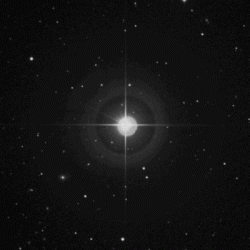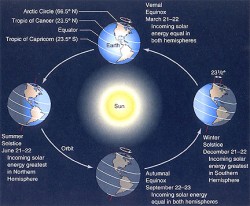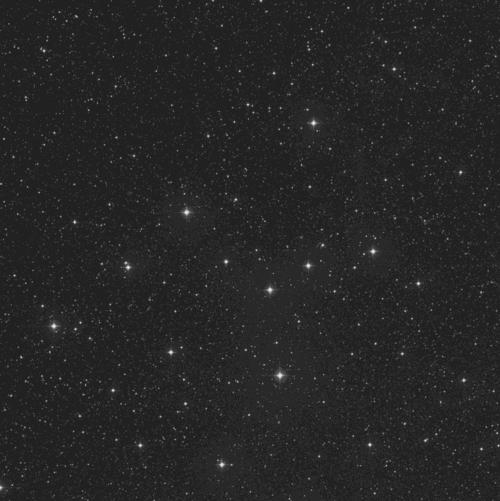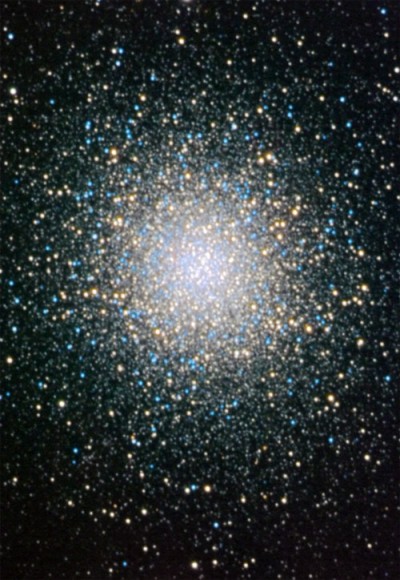Greetings, fellow SkyWatchers! As the Moon slowly departs from the early evening scene, we have the chance to start the weekend off with shooting stars as we pass through a branch of the Ophiuchid meteor stream. Over the next few days we’ll take a closer look at variable stars, new star clusters and old friends as we head out into the night together…
Friday, June 20, 2008 – Although we will have Moon to contend with in the predawn hours, we welcome the “shooting stars” as we pass through another portion of the Ophiuchid meteor stream. The radiant for this pass will be nearer Sagittarius and the fall rate varies from 8 to 20, but it can sometimes produce unexpectedly more.
 For variable star fans, let’s head towards the constellation of Corona Borealis and focus our attention on S – located just west of Theta – the westernmost star in the constellation’s arc formation. At magnitude 5.3, this long-term variable takes almost a year to go through its changes. It usually far outshines the 7th magnitude star to its northeast – but will drop to a barely visible magnitude 14 at minimum. Compare it to the eclipsing binary U Coronae Borealis about a degree northwest. In slightly over three days this Algol type star will range by a full magnitude as its companions draw together.
For variable star fans, let’s head towards the constellation of Corona Borealis and focus our attention on S – located just west of Theta – the westernmost star in the constellation’s arc formation. At magnitude 5.3, this long-term variable takes almost a year to go through its changes. It usually far outshines the 7th magnitude star to its northeast – but will drop to a barely visible magnitude 14 at minimum. Compare it to the eclipsing binary U Coronae Borealis about a degree northwest. In slightly over three days this Algol type star will range by a full magnitude as its companions draw together.
 Saturday, June 21, 2008 – Summer Solstice occurs today at the zero hour. So what exactly is it? Solstice is nothing more than an astronomical term for the moment when one hemisphere of the Earth is tilted the most toward the Sun. Today, the Sun is about 24 degrees above the celestial equator – its highest point of the year. The day of summer solstice also has the longest period of daylight…and the shortest of night; this occurs around six months from now for the Southern Hemisphere.
Saturday, June 21, 2008 – Summer Solstice occurs today at the zero hour. So what exactly is it? Solstice is nothing more than an astronomical term for the moment when one hemisphere of the Earth is tilted the most toward the Sun. Today, the Sun is about 24 degrees above the celestial equator – its highest point of the year. The day of summer solstice also has the longest period of daylight…and the shortest of night; this occurs around six months from now for the Southern Hemisphere.
 Tonight let’s look forward to the coming summer as we hop a fingerwidth northeast of Beta Ophiuchi (RA 17 46 18 Dec +05 43 00) to a celebration in starlight known as IC 4665. Very well suited to binoculars or even the smallest optics at low power, this magnificent open cluster is even visible to the unaided eye as a hazy patch.
Tonight let’s look forward to the coming summer as we hop a fingerwidth northeast of Beta Ophiuchi (RA 17 46 18 Dec +05 43 00) to a celebration in starlight known as IC 4665. Very well suited to binoculars or even the smallest optics at low power, this magnificent open cluster is even visible to the unaided eye as a hazy patch.
Hanging out in space far from the galactic plane, IC 4665 is anywhere from 30 to 40 million years old – relatively young in astronomical terms! This places the cluster somewhere between the age of the Hyades and the Pleiades. At one time the cluster was believed to have been home to an unusually large number of spectroscopic binaries. While this has been disproved, scopists will enjoy powering up on the approximate 50 members of this association to search for true multiple stars. Enjoy it tonight!
Sunday, June 22, 2008 – Today celebrates the founding of the Royal Greenwich Observatory in 1675. That’s 333 years of astronomy! Also on this date in history, in 1978, James Christy of the US Naval Observatory in Flagstaff Arizona discovered Pluto’s satellite Charon.
 While observing Pluto is quite possible with a mid-sized (8″) telescope, careful work is needed to separate and identify it from field stars. Just a few days ago, Pluto reached opposition, meaning it is viewable all night. Since it will take several nights of observation for confirmation, right now would be an excellent time to begin your Pluto quest. With a little research you’ll find plenty of on-line locator charts to help guide you on your way!
While observing Pluto is quite possible with a mid-sized (8″) telescope, careful work is needed to separate and identify it from field stars. Just a few days ago, Pluto reached opposition, meaning it is viewable all night. Since it will take several nights of observation for confirmation, right now would be an excellent time to begin your Pluto quest. With a little research you’ll find plenty of on-line locator charts to help guide you on your way!
For observers of all skill levels and equipment, it’s simply time to stop and have a look at a seasonal favorite which is now nearly overhead—M13. You’ll find this massive globular cluster quite easy to locate on the western side of the Hercules “keystone” about a third of the way between the northern and southern stars—Eta and Zeta.
 At a little brighter than magnitude 6, this 25,100 light-year distant globular cluster can be seen unaided from a dark sky location. First noted by Edmond Halley in 1714, the “Great Hercules Cluster” was cataloged by Messier on June 1, 1764. Filled with hundreds of thousands of stars, yet with only one young blue star, M13 could be as much as 14 billion years old.
At a little brighter than magnitude 6, this 25,100 light-year distant globular cluster can be seen unaided from a dark sky location. First noted by Edmond Halley in 1714, the “Great Hercules Cluster” was cataloged by Messier on June 1, 1764. Filled with hundreds of thousands of stars, yet with only one young blue star, M13 could be as much as 14 billion years old.
Thirty-four years ago, the Great Hercules Cluster was chosen by the Arecibo Observatory as the target for the first radio message delivered into space, yet it will be a message that won’t be received for over 25 centuries. Look at it with wonder tonight… For the light that left as you are viewing it tonight did so at a time when the Earth was coming out of the Ice Age. Our early ancestors were living in caves and learning to use rudimentary tools. How evolved would our civilization be if we ever received an answer to
our call?!
Wishing you clear skies and a wonderful weekend!
The week’s awesome images are Theta Coronae Borealis – Credit: Palomar Observatory, courtesy of Caltech, Solstice and Equinox – Credit: NASA, IC 4665 – Credit: Palomar Observatory, courtesy of Caltech, Pluto and Charon – Credit: NASA, and M13: “The Great Hercules Cluster” is the inspiring work of none other than R. Jay GaBany.


I love IC 4665 in Oph – to me it looks like a small version of the Orion Constellation: it has the hourglass shaped body, a sword, a raised left arm, and even a shield in the right arm to the side.
It appears a tad smushed, but the shape is very obvious in my 10×50 binox. I still see it in my telescopes, but the increased power (lowest I can go is 30X in my 4.5″ dob and 42X in my 10″ dob) doesn’t help – this “Mini-Orion” looks best in 10 Power Binoculars!
Enjoy!
-(RE)-
Thanks, RapidEye! I’m glad someone else likes my weird choices in things to look at…
There’s more to the sky than just the Messiers. 😉
Let’s dance!
I recently did IC 4665 for the Binocular Deep Sky list. It is an extremely beautiful object in binoculars. (I have 15X70 Celestron Skymaster Binocs). I highly recommend seeking this one out.
Good job, Tammy, keep the weird stuff coming!
Thanks, marcellus!
Keep watching those variables… I didn’t realize just how cool tracking a variable star was until I started doing it. If you want really weird, there’s another variable in the same field of view with U Corona Borealis – SAO 64632 and and rapid flare star (HD 137050), too!
I’d love to observe with you some time. 😉